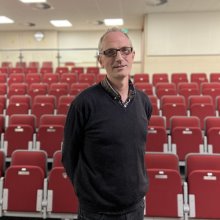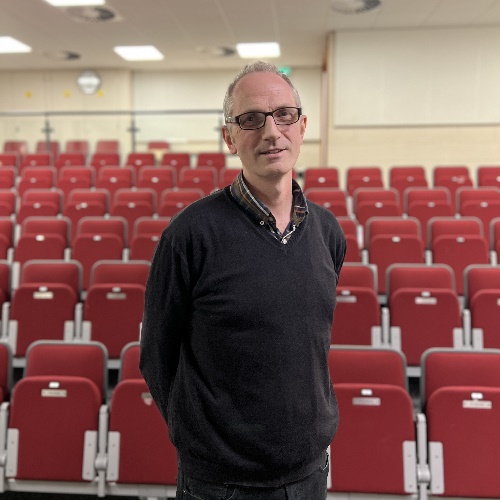
In the previous terms, Scholars’ Masterclasses have predominantly been delivered by pupils and staff where we have had topical presentations on media and censorship, the infamous Andrew Tate, how to be a Samurai, and more. However, in the second half of the Spring Term, we have been lucky to have presenters of a different sort – pupils' parents!
Mr Ed Gemmell, Wednesday 8 March
In the first of Scholars’ Masterclasses delivered by parents, Mr Gemmell, who is leader of The Climate Party, spoke about politics and why young people should get into it. Mr Gemmell first spoke about the political structure here in the UK including the tiers of local government – regional authorities, local authorities and parish councils – and how it is easy for individuals to join at the lowest level of government and additionally, how there are many opportunities available by way of positions.
Mr Gemmell then moved onto the reasons why people go into politics with the biggest motivation being local issues. This led to him talking about his own personal experience in politics as leader of The Climate Party, including a well-contested debate on climate change with former Brexit Party leader, Nigel Farage. Mr Gemmell also spoke about his party’s mission and aims and, following on from the Masterclass, had the opportunity to chat with two members of the College’s Eco Committee – Martha Berry and Richard Wang – who were keen to know more about what they could do.
Mr Bryan Padrick, Thursday 16 March
In the second Parents’ Masterclass, Mr Padrick presented on ancient Egyptian myths and religions. A time of polytheism, the ancient Egyptians worshipped many Gods, each with their own domains and responsibilities. In his fascinating presentation, Mr Padrick began with a general overview of Ancient Egypt, including its timeline and how there was a great focus on avoiding death, and a desire to reach the afterlife.
Mr Padrick then spoke about the mummification and embalming process in which after death, a body is removed of its organs and preserved with resins and linen. Bodies would then be placed in tombs which serve as protection in carrying the body into the next life. Along with their body, an individual would be buried along with objects and necessities, all of which would be needed in the next life.
Mr Padrick concluded his talk with the journey a person would take in order to reach the afterlife. Much of this is based on the Book of The Dead, which serves as a funerary text to help the deceased find their way to the afterlife in order to become united with the god of the dead, Osiris. The last stage of this journey is the ‘weighing of the heart’ in which a deceased person’s heart is weighed against a feather. If the deceased's heart balanced with the feather, they would be admitted into the Kingdom of Osiris. However, if their heart was heavier, it would be devoured by Ammit, a Goddess with the forequarters of a lion, the hindquarters of a hippopotamus, and the head of a crocodile – the three largest ‘man-eating' animals known to ancient Egyptians.
Mr Karl Elliott, Thursday 30 March
In the final Parents’ Masterclass of the Spring Term, pupils had the chance to hear from industrial designer, Mr Elliott. In this presentation, Mr Elliott spoke about the power of creativity and how it is in all our pockets. That creativity refers to an ordinary coin – an object in most of our pockets – and the creative and industrial process involved in getting a product like that out in mass circulation.
Mr Elliott began his presentation with an overview of what industrial design is, in addition to some well-known figures of the field including Bauhaus, William Morris, and James Dyson. In essence, industrial design is a combination of art and engineering – producing something aesthetically pleasing and functional, but manufactured via mass production.
After defining the role, Mr Elliott then spoke about his role within the Royal Mint. Speaking about how coins have evolved, Mr Elliott also touched on other products that have been manufactured including the Olympic medals for London 2012. Referring back to the creative and functional elements of a product, Mr Elliott expanded on the manufacturing process behind the recently new £1 coins. On the creative side, an open competition was held to determine the design of the reverse side and, on the functional side, Mr Elliott spoke about some of the coin’s features that make it the most secure coin in the world. These include its micro-lettering and alternatively milled sides; both of which make the coin hard to manufacture and reproduce.
Thank you to everyone who took the time to present on their topics. We are sure that our scholars found the experiences intriguing and useful in hearing from working professionals of different fields.





















